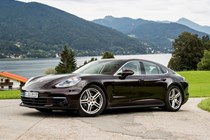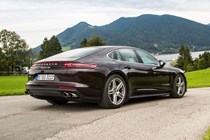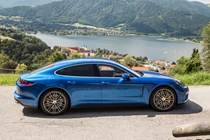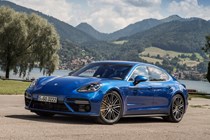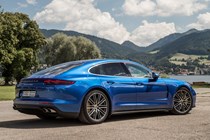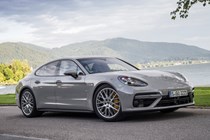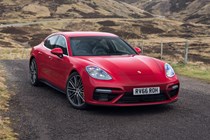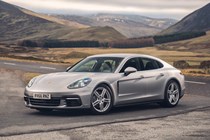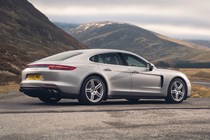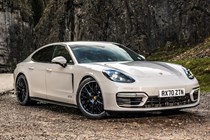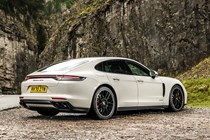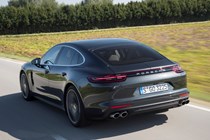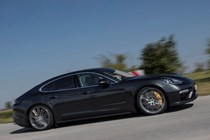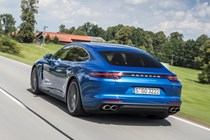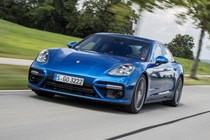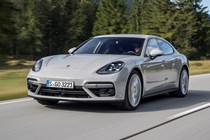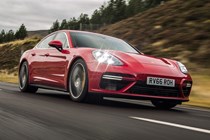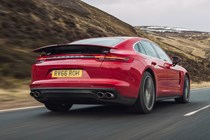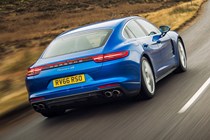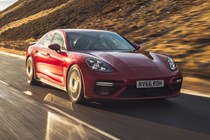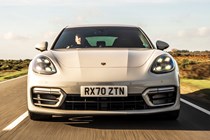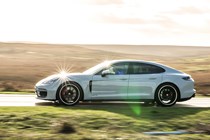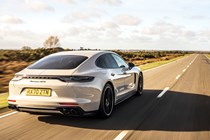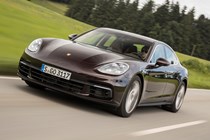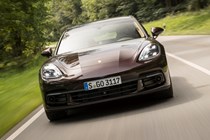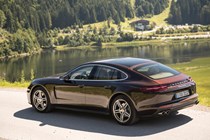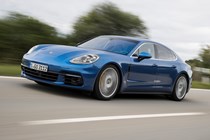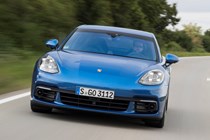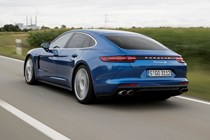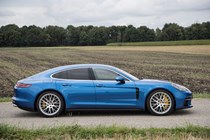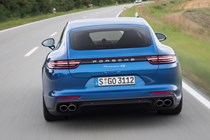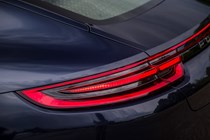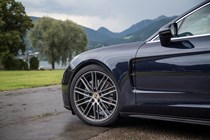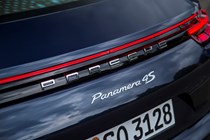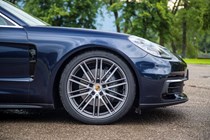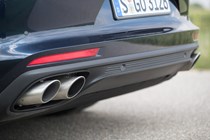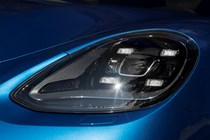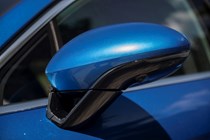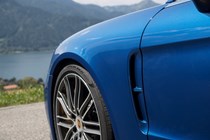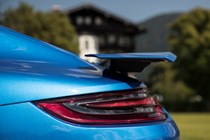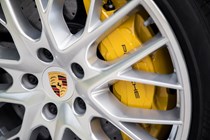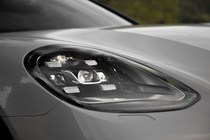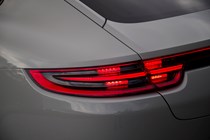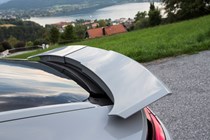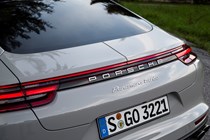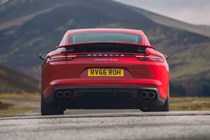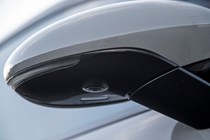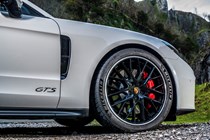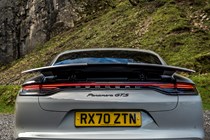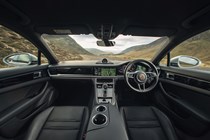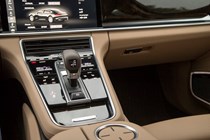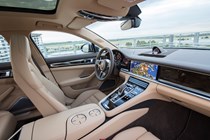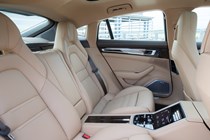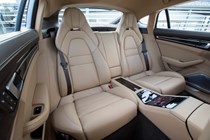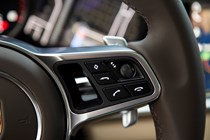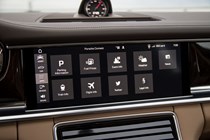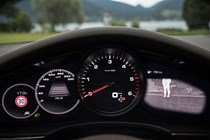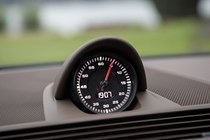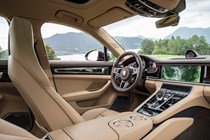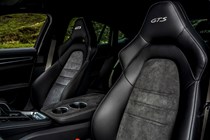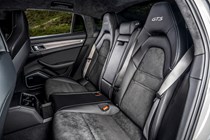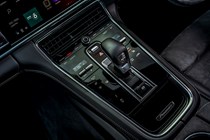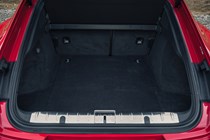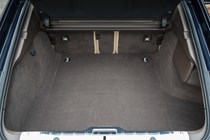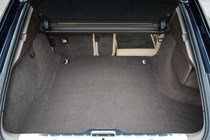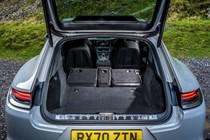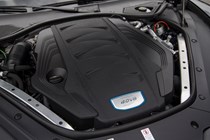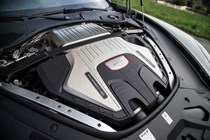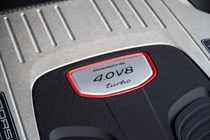
Porsche Panamera Saloon (2016-2024) engines, drive and performance
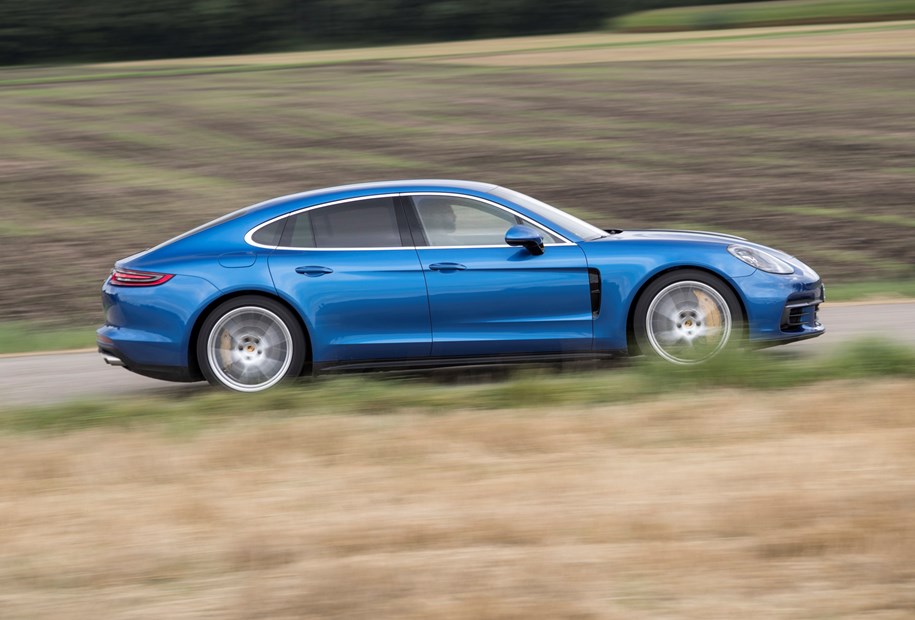
- Very powerful, very fast – especially the Turbo
- Four-wheel drive standard on most models
- Eight-speed dual-clutch automatic common to all
What engine options are there?
If it’s performance you want, you’ve come to the right place because the Porsche Panamera has it in spades.
Petrol engines
The least expensive Panamera and Panamera 4 feature a 3.0-litre V6 petrol engine with a turbo, producing 330hp and 450Nm of torque from a very low 1,340rpm all the way through to 4,900rpm, which should means it performs with impressive flexibility.
Like all Panameras, it’s fitted solely with an eight-speed dual-clutch PDK automatic. In rear-wheel drive form it’ll reach 164mph, but both four-wheel drive versions are slightly slower at 162mph. Acceleration times vary with the entry-level Panamera posting a 5.5-second* 0-62mph time, compared with 5.3 seconds* for the Panamera 4 and 5.4* for the 4 Executive.
While it’s amply quick, many will want more, which is where the 2.9-litre twin-turbo 4S and 4S Executive come to the fore. Power’s ramped up to 440hp, with peak torque of 550Nm on song from 1,750rpm and 5,500rpm, meaning it’s no slouch.
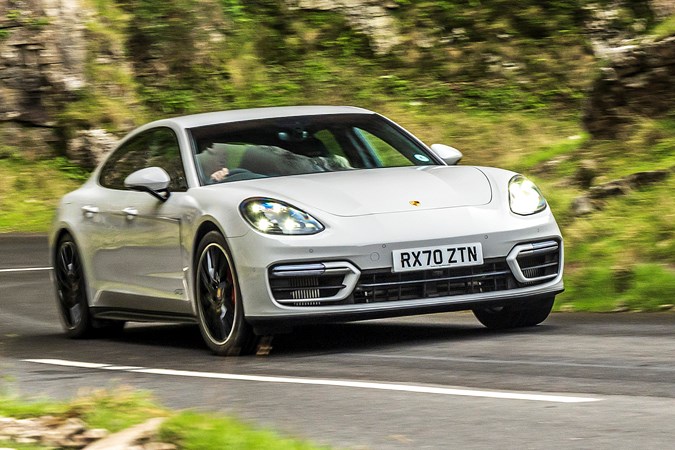
The 0-62mph blast takes 4.2 seconds* (4.3* for the long-wheelbase Executive) and top speed is 179mph. The lower weight of the smaller six-cylinder engine in the front also helps it to feel lighter on its feet, particularly in the corners.
Electric and hybrid engines
Headline figures of 113mpg and CO2 emissions of 56g/km will grab the attention of company car drivers fortunate enough to have the Panamera E-Hybrid on their employer’s choice list. Porsche claims that the plug-in Panamera can provide up to 31 miles of electric-only driving range, but this will require the most careful of driving.
This may be difficult when it has 462hp and 700Nm of torque on tap from 1,100rpm. That’s enough for a 3.1-second 0-62mph time (3.2 for the Executive) and a 172mph top speed. Not quite Tesla Model S levels of acceleration but the Panamera’s more fun to drive.
.jpg)
High-performance GTS and Turbo detailed
The fast models are the 480hp GTS and the 630hp Turbo S. You can do 0-62mph in as little as 3.2* seconds in the quickest model, which reaches a top speed of more than 190mph and has lapped the famous German Nurburgring fast enough to set a new record for saloon cars.
It still weighs 1,995kg, but you’d be hard pressed to tell as even the merest hint of intent to misbehave sees it rocketing up the road; overtaking is a blink-and-you’ll-miss-it affair, but all the while this massive car remains indefatigably composed.
All versions of the Panamera are available with the Porsche Sports Chrono Package, which adds a circular driving mode selector to the steering wheel, giving you a choice of Normal, Sport, Sport Plus and Individual settings. In the middle of the selector there’s also a Sport Response button, which you can press to instantly prime the car for 20 seconds of maximum performance in any given situation. This works very well.
With engines this powerful, it’s no wonder that Porsche has fitted four-wheel drive as standard to to most Panameras – save for the entry-level model – as it helps maintain traction. You can ever so occasionally detect how much it’s struggling to do this, but it never becomes a significant issue.
Similarly, the eight-speed transmission does occasionally feel a touch abrupt, but otherwise does a good job of managing so many ratios; paddleshifters on the steering wheel allow you to take control on demand.
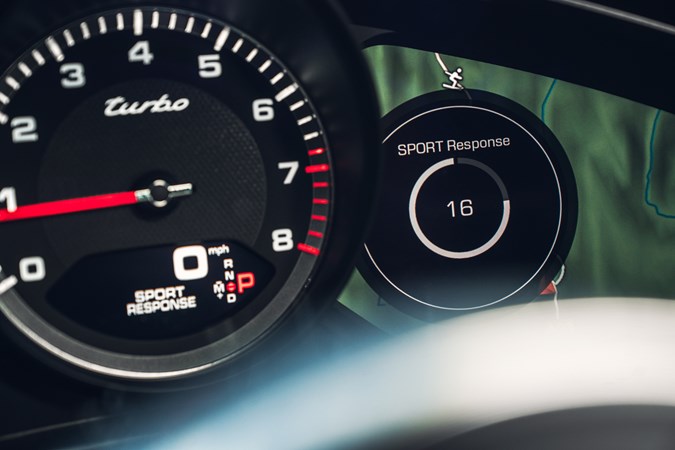
Handling
- Thrilling but poised, right across the range
- Belies its size on twisty roads, but very stable at high speed
- Optional extras make it even more capable
This is where the Porsche Panamera’s breadth of ability really impresses, as it offers limo-like comfort but can go round corners almost as well as a proper sports car – though it should be noted that we have so far only sampled the car fitted with rear-wheel steering system and air suspension.
The optional rear-wheel steering helps to make the car turn more easily at low speeds yet also feel more stable at high speeds; combined with the Sport Chrono Package, it also helps the Panamera become noticeably more agile in the most focused Sport Plus setting. This is a car you can drive very quickly when circumstances allow – for example, sections of the German autobahn without speed limits, where the car feels very much at home. The air suspension is covered in the Comfort section.
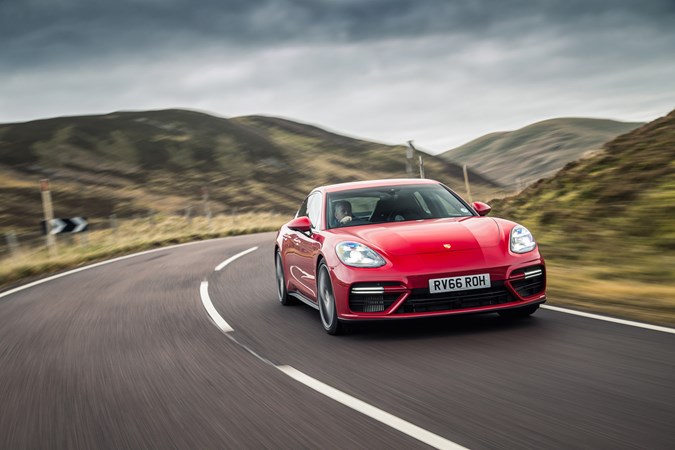
We are yet to test the active anti-roll system, but this will likely reduce the rolling motion in corners to near undetectable levels in everyday driving, since the Panamera hardly leans much without it. Grip levels are high, and the steering both accurate and acceptably nuanced for a large luxury vehicle. However, the Panamera feels every bit its two-metre width from behind the steering wheel, making narrow country lanes an occasionally nervous affair.
Finally, a brief word for Porsche 4D Chassis Control. This is an over-arching electronic brain that ensures all of the handling technology available on the car works in total cooperation instead of each component acting independently. It makes the car faster and safer.



